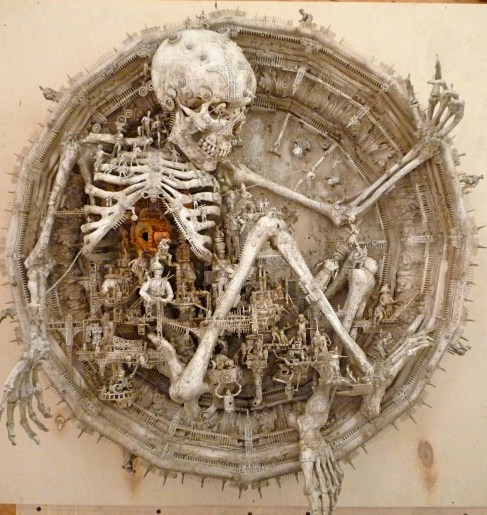Free Meditation
Why does humanity build? Incessantly, relentlessly. Human beings erect walls for their protection first – in a frenzy, then to inscribe the signification of power and safety. Fortresses, phalluses. Spears and towers, dungeons surrounded by ditches.
Following these, when the need for protection and privacy has been fulfilled, it is facades, gargoyles, caryatids, vitrines, and arabesques.
Could it be said that all the building to which cities have amounted has been an act motivated by fear? The fear of the Other?
Why defy Nature, and enclose ourselves within suffocating walls? Why imprison our own communities in self-sufficient, self-conscious, paranoid detention areas? Why obstruct free navigation, insult Nature by creating obstacles in Her way? The great cosmopolis, that very symbol of freedom, opportunity, and future – appears at some moments rather as a burden. Growing out, and when that is insufficient for its high ambitions, growing upward – Babylon-like, mechanic.
Building arises from the incapacity – or deliberate refusal – of the human being to make the self vulnerable, physically and mentally, and ideologically.
An enclosed physical capsule can hold within itself a contained metaphysical “bubble” – a cultural concoction of rituals, canons, expectations and practices exclusive to those dwelling within the confines of these walls, and inaccessible to others. The greatest weapon of humanity is surprise, astonishment, shock.
The socialist city is an instrument of propaganda, of manipulation – that is known. But now the city strikes back in a different manner – now aggressively – by digesting the forms cultivated by the Other and by spitting them back outwards, into the world.
This is a mechanism of self-defense – the façade is a disguised will to astonish. It masquerades as an easygoing tool intended for the fullfillment of aesthetic pleasure, secretly fulfilling its intrinsic plan of distraction – from the fear of the Other, from mistrust, and from the fear of the Self which arises from that mistrust.
Despite all this, the visual scope which architecture makes available has an infinite way of inspiring us. Architecture gives us a feeling of freedom which we cannot sustain outdoors, paradoxically.
Outdoors, we are inhibited.
Outdoors, we are vulnerable.
Within a building, we can let ourselves dance. We can let ourselves sign. We can let ourselves discuss matters without the threat of betrayal and the overhearing enemy. We can allow ourselves to exude our humanity, fully. And the façade of the buildings in which these activities occur are the veneers which protect us, conceal us, and wrap us up in the cocoon of security, the warm womb which each one of us seeks.
The language of architecture is one which speaks of the acceptance of dwellers of their own powerlessness in the face of nature, of their inherent need for warmth and compartmentalization, which is in turn motivated by an incessant and archaic inclination toward organization, control, and the exercise of power over the self… architecture embodies the fundamental striving toward an ideal state of willpower.
Artwork: Kris Kuksie, “Imminent Utopia”
Catapult the Roof into the Sky
chiaroscuro: light playing with angle
Reclaiming Geographical Annotation
Different Stories, Different Maps; Different Maps, Different Stories
The Other Side of Mapping Potential
Into the Abyss

Words of Bernard Tschumi, from “Architecture and Disjunction”.